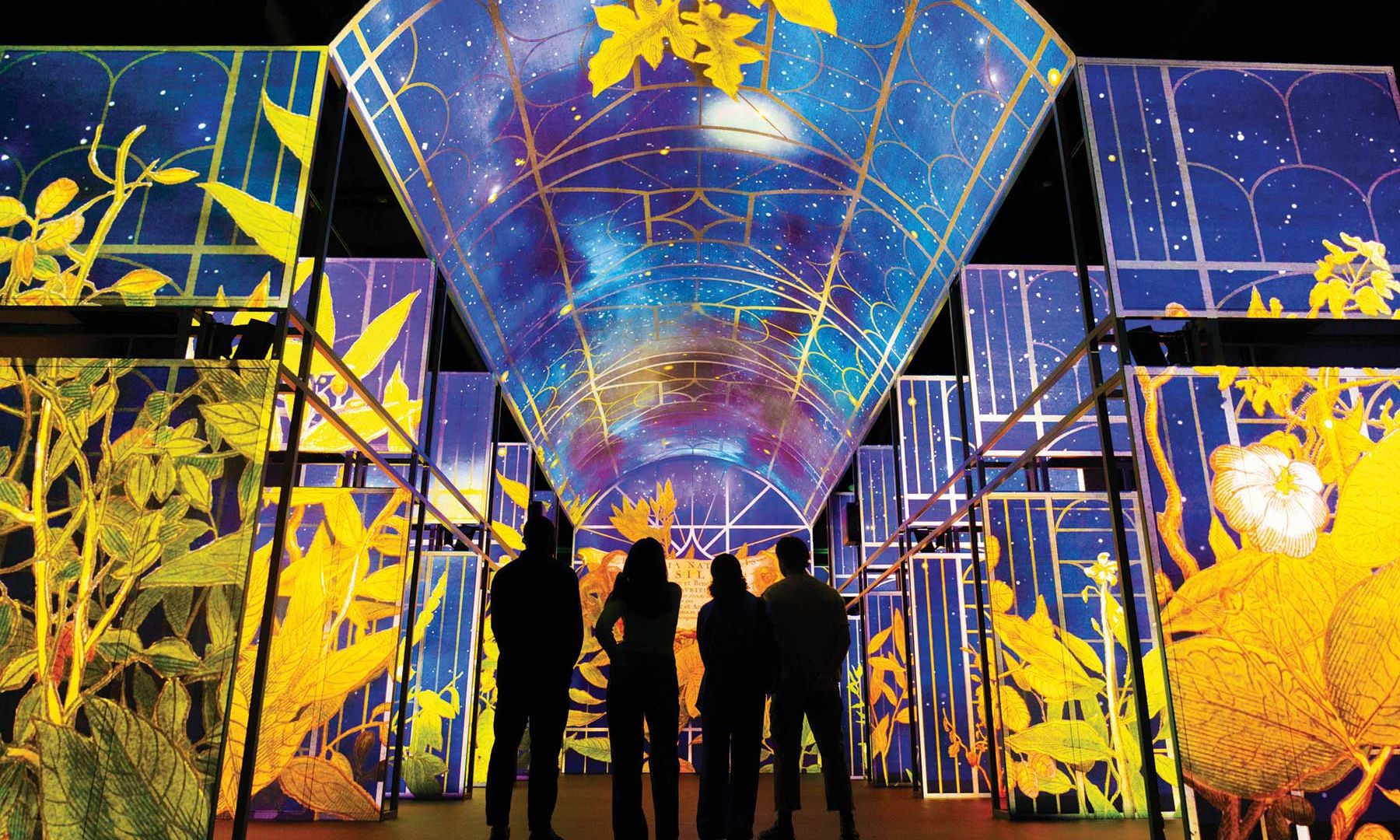Proceeds from the Book of Kells Experience at Trinity College Dublin will underwrite the €90m project
Photo: Zoe Ardiff
Shelf by shelf, bay by bay, the books have been leaving one of the most famous university libraries in the world. Just four bays now remain to show visitors how the barrel-vaulted Long Room of the Old Library at Trinity College Dublin used to look, and will again. Those books, too, will soon leave the campus for the first time in centuries, joining the 200,000 volumes already packed up in 20,000 crates for secure storage north of the Irish capital.
The most famous book of them all will remain in the building until the end of this year before a major conservation project gets under way. The Book of Kells, containing the four gospels of the New Testament in Latin, is one of the finest surviving examples of early Celtic Christian manuscript illumination. It was probably created by Irish monks on the remote Scottish island of Iona around AD800 and some believe it was completed in Kells, Ireland, following a Viking attack on Iona. It came to Trinity College for safekeeping in the mid-1600s as Ireland was torn apart by rebellions and their brutal suppression under Oliver Cromwell.
The Book of Kells is today one of Dublin’s leading visitor attractions, seen by almost 750,000 people last year as tourism rebounded after the pandemic, and by a record one million visitors in 2018. Until now, visitors have passed by the other treasures in the 65-metre Long Room with scarcely a glance. Save perhaps an ancient harp—associated by legend to the tenth-century king Brian Boru, but probably dating back to the 14th century—that inspired the emblem on Ireland’s euro coins and the trademark of Guinness, the city’s other star attraction.
While the 1712 library building awaits a full-scale overhaul by the firm Heneghan Peng Architects, an immersive digital substitute has popped up in a bright red temporary pavilion in the college grounds. The giant animations of the “Book of Kells Experience” celebrate the manuscript’s dizzyingly intricate pages, but they also tell the history of the building itself and reveal Trinity’s lesser-known treasures, including a major collection of children’s books. Marble busts of Socrates, William Shakespeare, Jonathan Swift and the library’s newly commissioned sculptures of women scholars Ada Lovelace and Lady Augusta Gregory are brought to life, chattering about the importance of ideas and imagination.
The digital experience, created in collaboration with the design agency Event, is already a box office hit, with tickets selling out during the first weeks. All the proceeds will underwrite the €90m conservation project, which was awarded €25m from the Irish government in 2021.
“Basically we’re future-proofing the building for generations to come,” says Dearbhla Mac Fadden, Trinity College Dublin’s head of marketing. The upgrades, long overdue, were accelerated by the disastrous 2019 fire at Notre-Dame cathedral in Paris.
The last significant conservation work in the library took place half a century ago. The Long Room’s distinctive sweet aroma was actually the smell of decay, as the leather and paper of the books gradually crumbled into dust. Many of the volumes now earmarked for repairs were being held together with cotton tape. They are at the mercy of both the breath and grime of millions of visitors, and the dust and pollution seeping in from the trafficked streets outside the 18th-century windows.
The comprehensive Old Library Redevelopment Project will bring sorely needed structural reinforcements and repairs, sealing the windows and installing an air filtration system with humidity and temperature controls. A new fire suppression system, currently in a test phase, will replace the present protocol of staff marshalling hand-held fire extinguishers. More glamorous innovations include a new visitor reception area and collections study centre, to be housed on the ground floor.
Although Trinity College added a striking new Brutalist library in the 1960s, the Long Room continues to be a working library into the digital age. As well as being delicately cleaned, all the books are being electronically tagged for the first time to enable their speedy retrieval from storage over the coming years. Many titles are being added to the free-access Virtual Trinity Library. A spokeswoman says the library is also developing robust precautions, including a full back-up system, against a cyber attack like the one that recently befell the British Library’s catalogue of 36 million records.
The fully emptied Long Room is set to close in December, when the Book of Kells will move to the newly restored 18th-century Printing House, the former home of the university’s printing presses, resembling a miniature prototype of the White House in Washington, DC.
The immersive pop-up pavilion has planning permission until 2029, and university officials hope the digital exhibition will then go on tour; Harvard has already expressed interest. In five years’ time, library staff hope all the books, including the Book of Kells, will have returned home to a spectacular building fit for the next century.

